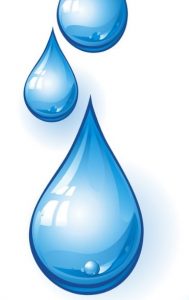 High humidity can be a huge problem in some parts of the country and at certain times of year, when it can add to the heat of summer and really drag you down. But in the winter in Colorado, we face the opposite problem, and as you may already well know, it can be just as bad. Many people in our areas have humidifiers to ease the trouble, but few know everything they should about their installation and maintenance.
High humidity can be a huge problem in some parts of the country and at certain times of year, when it can add to the heat of summer and really drag you down. But in the winter in Colorado, we face the opposite problem, and as you may already well know, it can be just as bad. Many people in our areas have humidifiers to ease the trouble, but few know everything they should about their installation and maintenance.
We want to make sure homeowners everywhere have the information they need to stay comfortable. Here’s what we think anyone should know about their humidifiers!
Why You Need It
In our region, homes need humidification in the winter. There’s no other way around the discomfort. A 10-12% humidity is common and, as you may well know, that causes a lot of problems.
First, you may feel a bit chillier, and just generally uncomfortable, as a good humidity level is anywhere from about 30-50. Second, it could dry out furniture, crack paint, and cause damage to antiques and valuables.
But perhaps the most common reason people seek humidification is relief from dry skin and mucus membranes, as well as from illness. Not only does all that dryness give you a static shock, but it can also keep you feeling sick. Dried-out sinuses make it harder for our bodies to fight off illness, but humidifiers help us to recover faster.
The Types of Humidifier
You could purchase a single, plug-in humidifier, but this won’t do you a lot of good—especially if you live in a larger home—and it’s difficult to maintain. For most homes, we’d recommend a furnace-mounted, whole-house humidifier.
There are three common types of furnace-mounted humidifier:
- A reservoir humidifier which contains a basin of water picked up by a pad mounted to a constantly rotating drum.
- A Flow-through or drip humidifier, which constantly drips water over a screen through which the air moves.
- Steam humidifiers, which generate steam to provide water vapor.
Why Humidifier Pads Need Replacement
In our area, humidifier pads need to be changed out annually because there is a lot of calcium in the water. That calcium creates deposits, known as scaling or limescale, that gets left behind in the pads, blocking water and airflow.
In any area, though, mold is a risk—another reason to continue changing out your humidifier pads. More information on this follows in the next section.
Complete Whole-House Humidifier Maintenance
How you maintain your humidifier, aside from just changing out the pads, depends on your usage along with manufacturer instructions. It also depends on the type of humidifier you have (reservoir, flow-through, or steam).
Since a reservoir humidifier is most likely to develop mold, you’ll have to clean out the drum and the pad each month, no matter what. With a flow-through humidifier, you can typically check the screen for scale buildup monthly, and then decide whether or not to clean it. But a steam humidifier may be fine cleaned annually instead.
It is important to shut the humidifier off and disconnect it before summer starts, so never forget this important maintenance step either!
For more information or to schedule humidifier installation in Colorado Springs, CO, contact Robbins Heating & Air Conditioning today.
